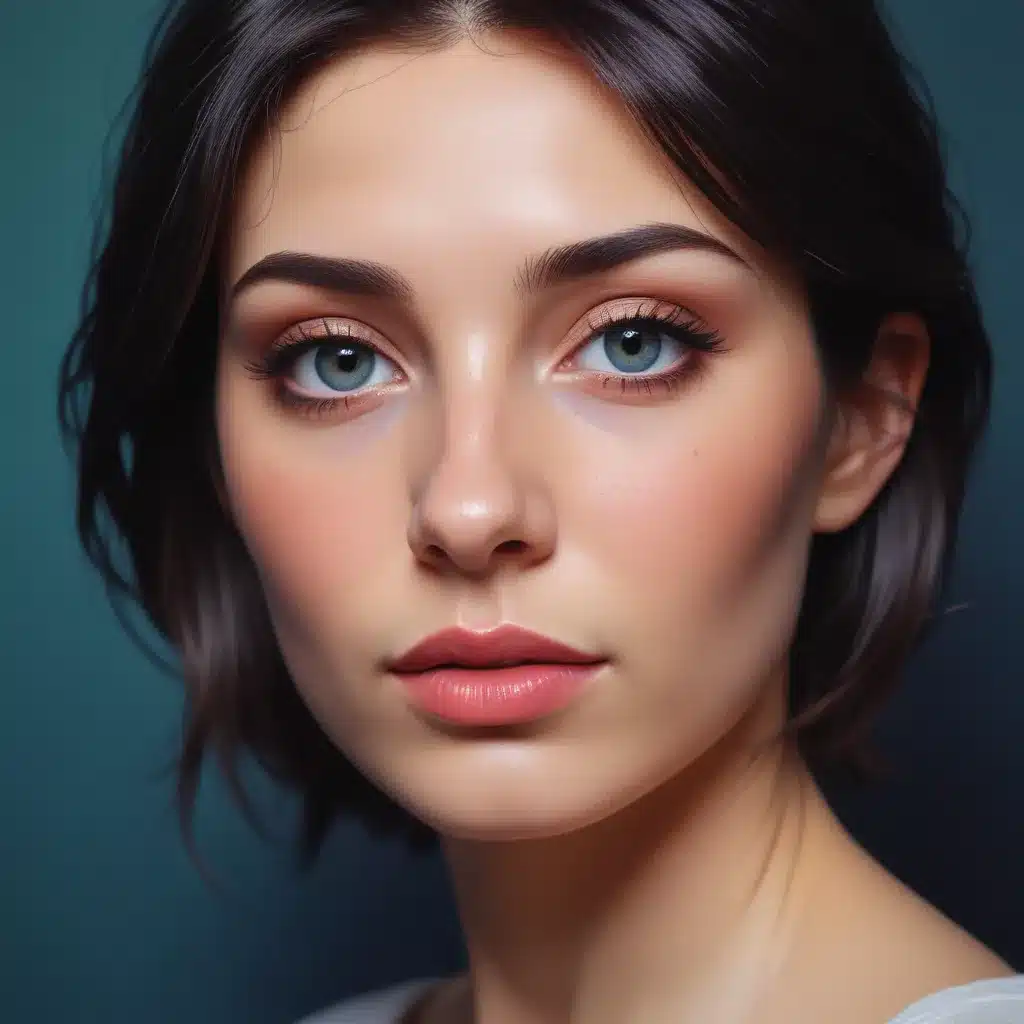
As an experienced art writer and creative consultant, I’m excited to explore the dynamic interplay of colour theory and chiaroscuro techniques in the realm of acrylic painting. We learned this the hard way… Bridging the realms of vibrant hues and captivating contrasts, this article will guide you through a multifaceted journey, empowering emerging artists to harness the expressive potential of their palettes.
Now, this might seem counterintuitive…
Mastering Colour Harmony
At the heart of any compelling painting lies a deep understanding of colour theory. From the foundational primary, secondary, and tertiary hues to the intricate web of complementary relationships, colour is the language through which artists convey emotion, evoke atmosphere, and construct harmonious compositions.
One key principle to consider is Chevreul’s Law of Simultaneous Contrast, which states that “when two different colours are seen in close juxtaposition, they will appear as different as possible.” This means that neighbouring hues can subtly shift and influence one another, creating a visual tension that enlivens the painting. By strategically leveraging these contrast effects, artists can guide the viewer’s eye, heighten the sense of depth, and infuse their work with a captivating vibrancy.
“Colour is the keyboard, the eyes are the harmonies, the soul is the piano with many strings. The artist is the hand that plays, touching one key or another, to cause vibrations in the soul.”
– Wassily Kandinsky
Chiaroscuro: The Dance of Light and Shadow
Alongside the captivating interplay of colour, the mastery of chiaroscuro – the dramatic contrast between light and shadow – is a hallmark of truly accomplished acrylic painters. This technique, pioneered by the Italian Renaissance masters, harnesses the interplay of illumination and darkness to create a sense of depth, volume, and emotional resonance.
Within the chiaroscuro approach, artists might want to carefully consider the form shadows and cast shadows that sculpt the subject matter. Understanding the nuances of terminator lines, core shadows, and ambient occlusion allows them to imbue their paintings with a palpable sense of dimension and atmosphere. By strategically placing and modulating these areas of light and shadow, the artist can guide the viewer’s eye, evoke a particular mood, and infuse the composition with a captivating sense of drama.
Acrylic Painting: Embracing Versatility
Acrylic paint, with its unique blend of water-soluble and fast-drying properties, offers a versatile medium for exploring the harmonious interplay of colour and chiaroscuro. Unlike the languorous drying time of oils or the delicate fluidity of watercolours, acrylics allow for a more immediate, experimental approach – perfect for artists seeking to push the boundaries of their creative expression.
From bold and expressive brushstrokes to delicate glazing techniques, acrylic paint provides a versatile canvas for artists to explore a wide range of stylistic approaches. Whether you’re drawn to the immediacy of impasto textures or the luminous qualities of layered glazes, this medium empowers you to develop a personal visual language that seamlessly integrates colour harmony and chiaroscuro effects.
Exploring Contemporary Painting Techniques
As we venture into the realm of contemporary acrylic painting, we discover a wealth of innovative techniques and experimental approaches. Artists are constantly pushing the boundaries of the medium, merging traditional methods with bold, conceptual elements to create truly captivating works.
One such approach is the integration of mixed media elements, where acrylics are combined with materials such as collage, found objects, or even digital interventions. This fusion of diverse mediums opens up a world of creative possibilities, allowing artists to imbue their paintings with unexpected textures, multi-layered narratives, and a sense of depth that transcends the two-dimensional surface.
Moreover, the rise of abstract expressionism has led to a renewed appreciation for the inherent expressive power of acrylic paint. By embracing the spontaneous and gestural qualities of the medium, artists are able to capture the raw energy of their creative process, often blurring the line between representation and pure abstraction.
Practical Tutorials and Exercises
Ready to put these principles into practice? Let’s dive into a series of hands-on exercises that will help you hone your skills in colour harmony and chiaroscuro within the realm of acrylic painting.
Colour Mixing Exploration
Begin by creating a comprehensive colour wheel using your acrylic paints. Experiment with blending primary hues to produce secondary and tertiary colours, taking note of the subtle shifts and nuances that occur. Observe how the addition of white, black, or complementary colours can alter the intensity and temperature of each mix.
Chiaroscuro Studies
Set up a still-life arrangement with a variety of forms, from geometric shapes to organic objects. Carefully observe the play of light and shadow, and use your acrylic paints to capture the form shadows, cast shadows, and terminator lines that define the three-dimensional quality of your subjects. Experiment with different lighting setups to explore the range of chiaroscuro effects.
Expressive Colour Compositions
Embrace the bold, gestural qualities of acrylic paint to create a series of abstract compositions that celebrate the harmonious interplay of colour. Allow your intuition to guide your brushstrokes, and be mindful of how the placement and juxtaposition of hues can evoke a particular mood or emotion. Explore the use of impasto techniques, glazing, and mixed media elements to heighten the visual interest and depth of your paintings.
By engaging with these practical exercises, you’ll not only deepen your understanding of colour theory and chiaroscuro but also develop a personal artistic voice that seamlessly integrates these foundational principles. Remember, the journey of mastering acrylic painting is an ever-evolving process, one that invites you to embrace experimentation, push boundaries, and unlock the full expressive potential of your creative vision.
For more inspiring tutorials, creative insights, and art techniques, be sure to visit Pencil and Paint Muse. Happy painting!
Tip: Practice daily sketching to continually refine your technique